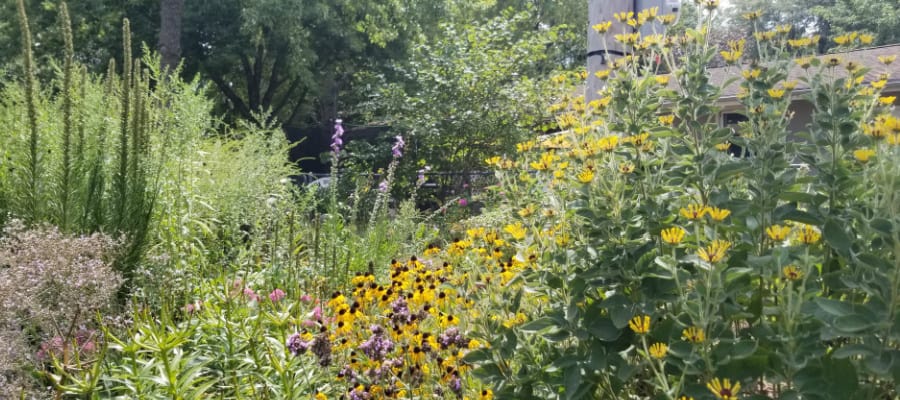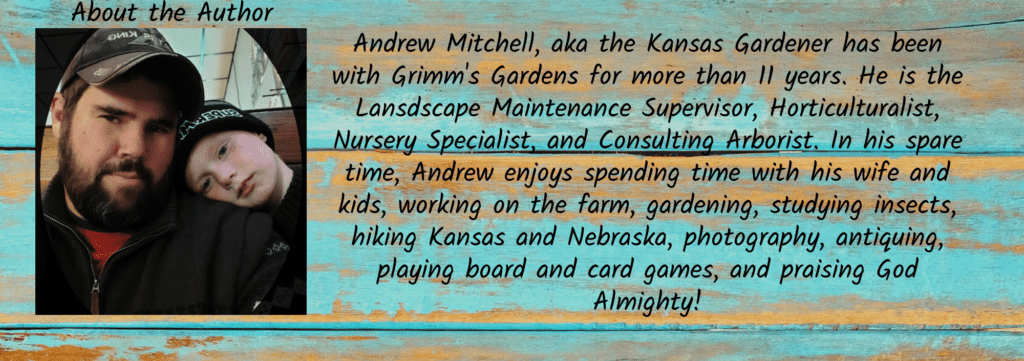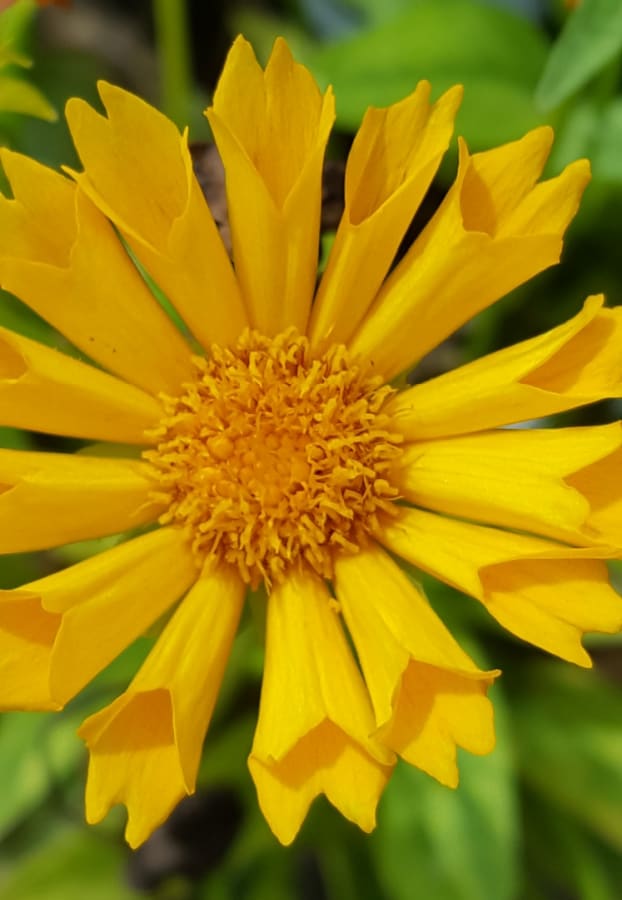What are quilled flowers? Flower petals which are rolled or “quilled”. These petals can be found in many plants of the Aster Family, and they are one of my favorite things to collect in the garden. Already, I have several perennials with quilled flowers, and I am looking to add more soon.
Nature helps the gardening world grow by throwing out flaws every once in awhile, which broaden the diversity of the landscape. We see it most in things like flower color; a white flower when it is normally pink or purple. Or sometimes a weeping habit in the case of a tree or shrub. But the quilled flowers of nature seems to be a pretty rare thing, and most common in just the Aster Family plants.
Some flowers are naturally tubular. These include penstemons, red hot poker, and many others. But rolling of the petals is not a normal occurrence, but a rare one. I have come across 8 genuses within the Aster Family which have quilled flowers.
What is the Aster Family?
The Aster Family is a group of flowering plants with composite flower heads, comprised of around 32,000 species. Surprisingly, the only plant family bigger than the Aster Family is the Orchid Family. Nearly all Aster Family members bear their flowers in dense flower heads called capitula. They are surrounded by involucral bracts, and when viewed from a distance, each capitulum may appear to be a single flower. Enlarged outer (peripheral) flowers in the capitulum may resemble petals, and the involucral bracts may look like a calyx.
Members of the Aster Family which are commonly used in gardening include:
- Coneflowers (Echinacea species)
- Asters
- Chrysanthemums
- Daisies
- Black-Eyed Susans (Rudbeckia species)
- Blanketflower
- Coreopsis
- Sunflowers
- Dahlias
- False sunflowers
Is There a Benefit to Quilled Flowers?
As far as I can tell, there appears to be no benefit to having quilled flowers. In the head of the flower, the ray flowers are the ones which are quilled. At the base of the ray flowers is the anther, so having a rolled petal up to and possibly over the anther may be a deterrent to pollinators.
Many of the species which have quilled flowers are also doubles, meaning that they have multiple rows of ray petals, and often no disc flowers. These have to be grown from cuttings or divisions, not from seed. In nature, they would not make it past the first year.
Plants with Quilled Flowers
These can be quite unique in the garden, so plant them appropriately and with good companions. Below is a list of the commonly found flowers with these special flaws.
- Dahlia ‘Bold Accent’, ‘Cabana Banana’, ‘En Pointe’, ‘Flip Flop’
- Coreopsis ‘Jethro Tull’
- Rudbeckia hirta ‘Chim Chiminee’
- Rudbeckia subtomentosa ‘Henry Eilers’, ‘Little Henry’
- Daisy ‘Real Neat’
- Coneflower ‘Sunrise’
- Helenium ‘Betty’
- Chrysanthemum ‘Red Carousel’, ‘Fine Feathers’, ‘Joanette’, ‘First Lady’, ‘Ivory Pinwheel’
- Gaillardia pulchella

Companion Plants
Once you see these in your own garden, you will want to add companion plants to accent them. The point with companion planting is to highlight each other, not outshine. Look for plants with complimentary textures and colors, but not ones that clash. I like to use grasses as a soft compliment, and plants that bloom in different weeks or seasons. Gardens with a continuous flow of color through the season have the most complimentary companion plants.
Plants with silvery soft edges, such as lavender, artemisia, and Stachys byzantium (Lamb’s ears) can be complimentary to almost any plant, because the silvery color is a resting place for the eyes as it moves within the garden.

A List of Companion Plants for Quilled Flowers
This is a general list of perennials and grasses that work well as companion plants for quilled flowers as well as other favorites. Some of these I will be using in conjunction with beds of dahlias in the summer of 2022.
- Silver mound
- Lavender ‘Munstead’
- Lamb’s ears
- Blue Grama ‘Blonde Ambition’
- Prairie dropseed
- Little Bluestem
- Woodland sedge
- Yarrow ‘Moonshine’
- Allium ‘Millenium’
- Calamint
- Blunt Mountain Mint
- Virginia Mountain Mint
- Vernonia ‘Iron Butterfly’
- Nepeta ‘Cat’s Pajamas’
Conclusion
Look around nature and see if you can find any quirky flaws. I am always looking. That is why I find things, even in my own yard. Since moving to our place, I have seen as many as 5 different plant flaws from trees, shrubs, perennials, and grasses within my own yard. Go out and see what you can find.
Happy planting!




